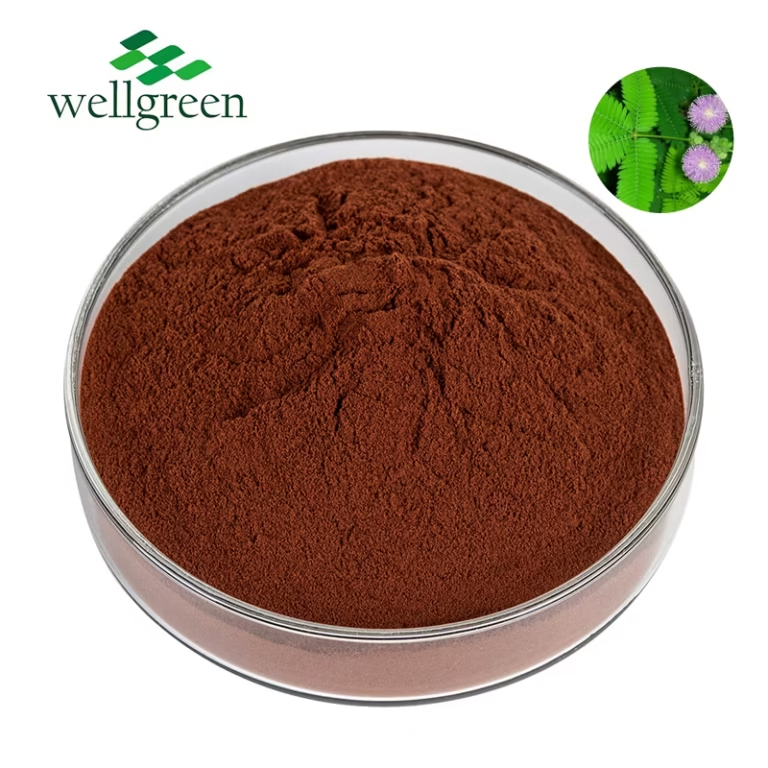Mimosa Hostilis: A Sacred Plant for Indigenous Cultures
Wiki Article

Mimosa hostilis is a significant plant deeply ingrained in the traditions of many Indigenous cultures across South America. For centuries, it has been employed by indigenous communities for its multifaceted spiritual and medicinal applications. The root bark, known as teonanácalli, is particularly revered for its hallucinogenic effects, believed to unveil profound visions that facilitate healing.
Through traditions, the plant spirit of Mimosa hostilis is invoked, guiding individuals on a path of self-discovery and understanding with their inner selves. The knowledge concerning this sacred plant has been passed down through generations, preserving the rich cultural heritage and knowledge of these communities.
MHRB Extract: Unveiling the Secrets of Mimosa Hostilis
Mimosa hostilis, a lush plant indigenous to the Amazon Basin, has captured the attention of both spiritual seekers for centuries. This intriguing species harbors within its roots a potent extract known as MHRB, which has gained significant attention in recent times.
MHRB extract is celebrated for its effects, often associated with spiritual exploration. Ethnobotanical studies suggest a long history of MHRB use in healing ceremonies.
- Scientists continue to explore the chemical constituents of MHRB, seeking to illuminate its full range of effects.
- The nuances surrounding MHRB usage require awareness. It is vital to engage the expertise of knowledgeable individuals before engaging in any practices involving this powerful substance.
Exploring the Ethnobotanical Uses of Mimosa tenuiflora
Mimosa tenuiflori, commonly acknowledged as "mimosa", holds a significant position within the ethnobotany tradition of diverse tribes. Its wide-ranging properties have been harnessed for centuries in folk medicinal practices, as well as in ceremonies. The roots of this remarkable plant possess a rich spectrum of bioactive compounds believed to exhibit medicinal effects.
From treating ailments like inflammation to promoting spiritual awareness, Mimosa tenuiflora has long been respected for its profound effect on human well-being.
The Chemistry and Pharmacology of Mimosa Hostilis Root Bark
Mimosa hostilis root bark contains a complex chemical profile, primarily known for its significant concentrations of alkaloids. Among these, copyright and THH are particularly noteworthy. These molecules possess a range of pharmacological effects, including psychoactive effects. The bark is also other alkaloids, such as norharmane, which may contribute to its comprehensive pharmacological profile.
The traditional uses of Mimosa hostilis root bark encompass a range of healing purposes, particularly in South American societies. However, it is crucial to understand that scientific research on the efficacy of these uses remains scarce.
Harnessing the Power of copyright with Mimosa Hostilis
Mimosa hostilis, a tree native to South America, has captured the attention of researchers and individuals alike for its potent compounds, particularly dimethyltryptamine, or copyright. copyright is a powerful hallucinogenic substance known for producing intense altered states of consciousness. By ingesting the bark of Mimosa hostilis, one can explore the realms of copyright-induced experiences. It is crucial to remember that copyright is a strong substance and should be treated with respect.
- Responsible use is paramount, and researching from experienced individuals or knowledgeable sources is highly recommended.
- The experience of copyright can be both transformative but also potentially overwhelming. It is important to prepare both mentally and physically for the consequences that may arise.
copyright from Mimosa hostilis presents a unique opportunity to delve into the depths of consciousness, potentially leading to personal growth and understanding.
Ethical considerations Using Mimosa Hostilis
The utilization of Mimosa hostilis for traditional purposes raises a myriad of philosophical questions. While some argue that its cultural significance warrants respect and tolerance, others warn its use due to potential negative consequences. It's crucial to evaluate this complex issue with sensitivity, taking into account the social contexts and potential side effects. A nuanced perspective is essential for navigating the ethical nuances surrounding Mimosa hostilis.
Raising Mimosa Hostilis: A Guide for Growers
Embarking on the quest of cultivating Mimosa Hostilis can be a rewarding experience for the dedicated grower. This intriguing plant, indigenous to tropical regions of the Americas, has gained significant recognition in recent years due to its unique properties. Before your cultivation quest, it is crucial to comprehend the specific parameters this plant demands to thrive.
- Ensuring adequate sunlight is paramount for healthy Mimosa Hostilis growth. These plants thrive in unfiltered sunlight, ideally receiving a minimum of six hours per day.
- Ensuring well-drained soil is essential to prevent root rot, a common ailment that can destroy your plants. A mixture of sandy soil with organic matter is ideal.
- Frequent watering is necessary, but be mindful not to overwater your Mimosa Hostilis. Allow the top inch of soil to harden before providing another moistening.
The Shamanic Traditions Surrounding Mimosa Hostilis
Deep within the timeless forests of South America, the rituals of vision have been honored for generations. Among these enchanting allies is Mimosa Hostilis, a humble plant revered by the shamanic traditions of indigenouscommunities. It holds within its leaves a wealth of knowledge, guiding healers on their journeys into the unseen.
The elders understand that Mimosa Hostilis is not simply a medicinal agent; it is a bridge between worlds, connecting us to the ancient energies that weave all of creation.
Confronting Legal Problems with Mimosa Hostilis
The legal status of mimosa hostilis varies greatly from one country to another. It means that the acceptability of possessing, using, or growing this plant is reliant upon your exact place of residence.
Furthermore, laws and regulations pertaining to mimosa hostilis are constantly adapting. It is therefore vital that you meticulously research the specific legal framework in your region.
- Seeking advice from a legal professional who specializes in plant-based substances laws is highly recommended.
- Remaining informed about any changes to the law can help you avoid any potential legal difficulties.
Mimosa Hostilis and Spiritual Exploration: A Journey Inward seeking
The ancient wisdom whispered through the rustling leaves of Mimosa Hostilis calls to explorers on a mystical quest. Journeying upon this path is to reveal hidden dimensions within, where the veil between worlds fades. It's a transformative experience that guides the soul, revealing truths latent beneath the surface. As you blend with the essence of this sacred plant, be prepared for visions that shift your worldview.
- Embrace the unknown with an open heart and a curious mind.
- Release all expectations and allow yourself to be carried by the flow.
- Remember, this is a path of self-discovery. Have faith in your own intuition.
The wisdom gained through Mimosa Hostilis resonates long after the experience has faded. It is a gift that can transform your life in profound and website permanent ways.
Understanding the Dangers and Advantages of Mimosa Hostilis
Mimosa hostilis is a plant native to South America, gaining increasing attention for its potential pharmacological properties. While it contains valuable compounds like copyright, responsible for its psychoactive effects, it's crucial to approach this plant with respect. Understanding both the risks and the advantages of Mimosa hostilis is essential for safe and informed use. Potential negative consequences can include psychological distress, emphasizing the need for thorough research, responsible consumption, and a safe environment.
- It's important to consult with a healthcare professional before using Mimosa hostilis or any products derived from it.
- Proper dosage is crucial to minimize potential risks.
- Be aware of the legal status surrounding Mimosa hostilis in your locality.
- Always prioritize safety and well-being when exploring the use of this plant.
 Report this wiki page
Report this wiki page